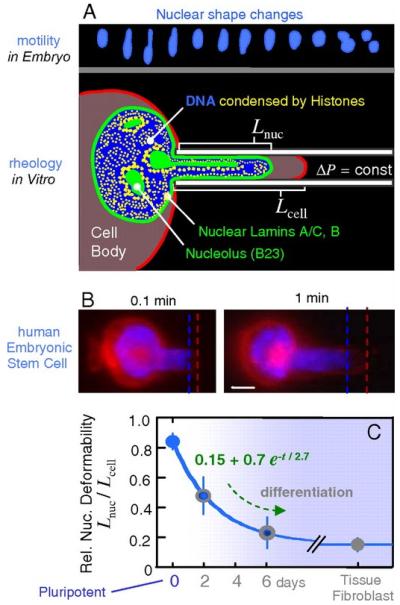Figure 4.

Nuclei of human stem cells are more deformable than nuclei of differentiated cells. (a) Neural progenitor cell nuclei show large deformations during in vivo migration. Micropipette aspiration mimics such distortions. (b) Human embryonic stem cells (ESCs) were aspirated after differentiation in culture, and the ratio of nuclear extension to cytoplasmic extension was measured as Lnuc/Lcell. A day-zero pluripotent ESC is shown with labeling of nuclear DNA (blue) and the cell membrane (red). Scale bar: 3 μm. (c) As differentiation progresses, ESC nuclei stiffen nearly six-fold relative to cytoplasm, and the decrease in relative compliance fits an exponential decay. Differentiated cells such as embryonic fibroblasts also have a nucleus that is stiffer than the cytoplasm. Reproduced from Reference 142 with permission.
